The smallest members of the dinosaur family tree have often yielded the biggest scientific breakthroughs. From the chicken-sized Compsognathus to the gliding Microraptor, these diminutive dinosaurs have repeatedly forced paleontologists to reconsider established theories about dinosaur evolution, behavior, and the origins of birds. While their larger cousins like Tyrannosaurus rex and Brachiosaurus tend to capture the public imagination, these small theropods have provided some of the most important insights into dinosaur biology. Their well-preserved fossils, often including soft tissues and feathers, have helped bridge the evolutionary gap between dinosaurs and modern birds, revolutionizing our understanding of these ancient creatures. This article explores how these pint-sized predators made an outsized impact on paleontology.
The Pioneer: Compsognathus and Early Dinosaur Science
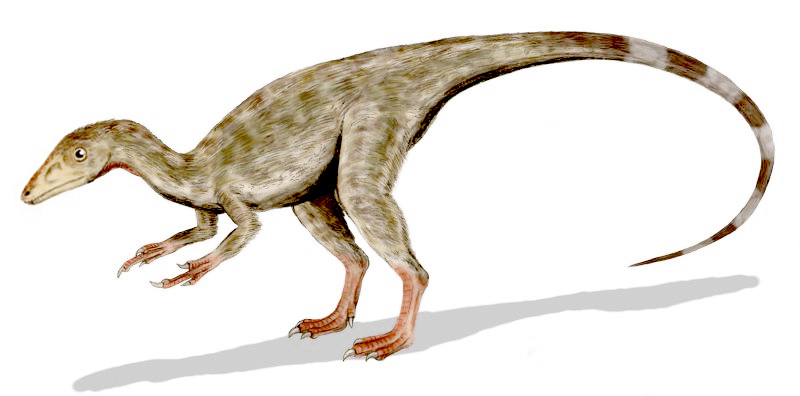
Discovered in the limestone deposits of Bavaria, Germany in 1859, Compsognathus holds the distinction of being one of the first small theropod dinosaurs ever described by science. At roughly the size of a chicken, this Late Jurassic predator immediately challenged the Victorian notion that all dinosaurs were gigantic beasts. The exquisitely preserved specimen revealed a delicate skeleton with hollow bones, suggesting an agile, lightweight build rather than the ponderous reptiles depicted in early paleontological reconstructions. In one specimen, paleontologists even discovered the remains of a small lizard in its abdominal cavity, providing rare direct evidence of dinosaur diet. As one of the smallest dinosaurs known to science for many years, Compsognathus played a crucial role in early discussions about the relationship between dinosaurs and birds, with Thomas Henry Huxley using it as evidence for his then-controversial theory that birds evolved from dinosaurs.
The Size Perspective: Just How Small Were These Dinosaurs?
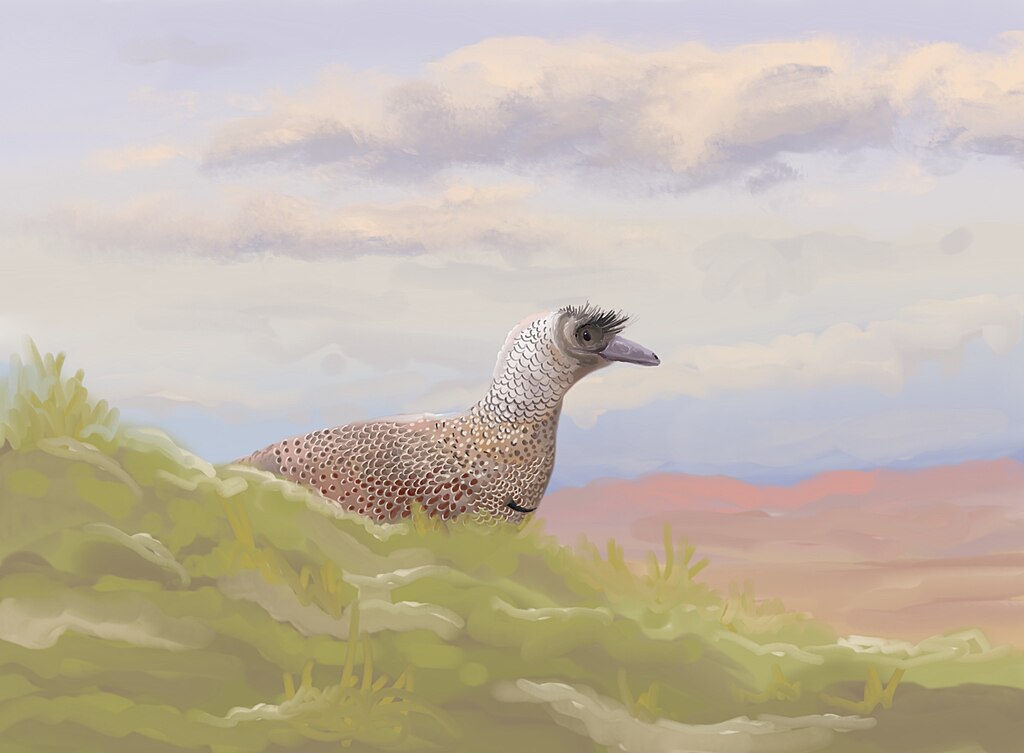
When we discuss “small” dinosaurs, the scale is truly remarkable by dinosaurian standards. Compsognathus, long considered the smallest known dinosaur, weighed approximately 3.5 pounds (1.6 kg) and measured about 2.3 feet (70 cm) in length, with much of that being its long tail. Microraptor was even more diminutive, with some specimens weighing less than 2 pounds (1 kg). For comparison, an average house cat typically weighs between 8-10 pounds. The small coelurosaurian Parvicursor was barely 13 inches (34 cm) long, about the size of a modern crow. These minute dimensions allowed these dinosaurs to occupy ecological niches unavailable to their larger relatives, hunting insects and small vertebrates in dense forest environments. Their small size also meant they could evolve specialized adaptations more rapidly than larger dinosaurs, as smaller body mass requires less energy to maintain and allows for faster generation times, accelerating evolutionary processes.
Sinosauropteryx: The First Feathered Dinosaur
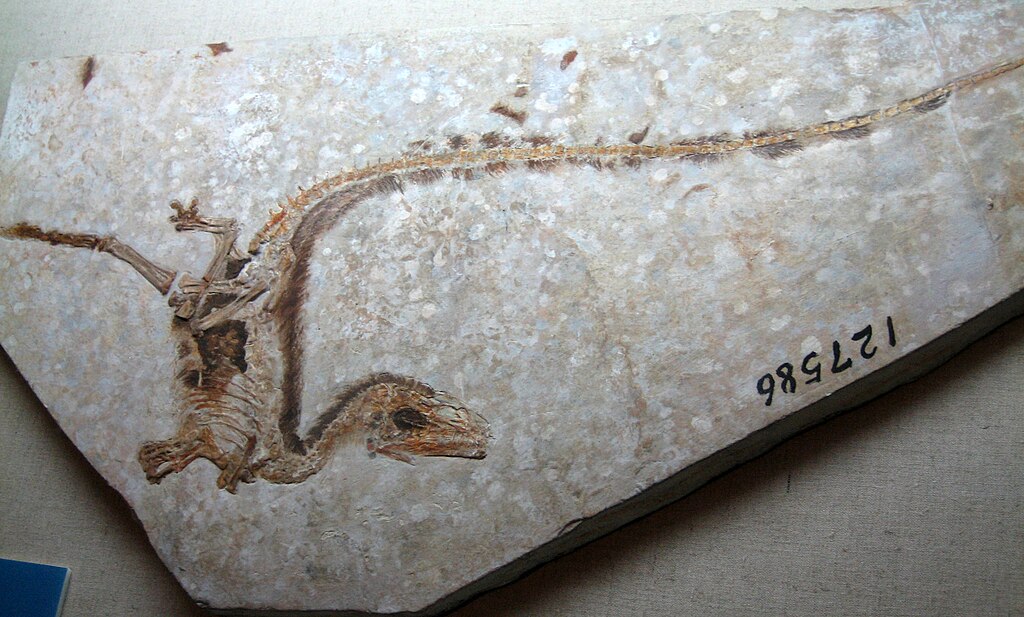
The discovery of Sinosauropteryx in the Liaoning Province of China in 1996 sent shockwaves through the paleontological community, providing the first conclusive evidence of feathered dinosaurs. This turkey-sized theropod, dating to about 125 million years ago, preserved clear impressions of primitive feather-like structures along its back, tail, and limbs. These structures weren’t the flight feathers of modern birds but rather simple filaments that likely served for insulation or display. The revelation fundamentally transformed our understanding of dinosaur appearance and physiology, suggesting that many dinosaurs weren’t the scaly reptiles depicted in popular culture but feathered creatures. The presence of these integumentary structures in a relatively primitive theropod indicated that feathers had evolved much earlier in dinosaur evolution than previously thought, long before the emergence of birds. Sinosauropteryx’s remarkably preserved fossils also revealed other details about its life, including a reddish-brown banded tail coloration pattern, among the first direct evidence of dinosaur coloration.
Microraptor: The Four-Winged Glider
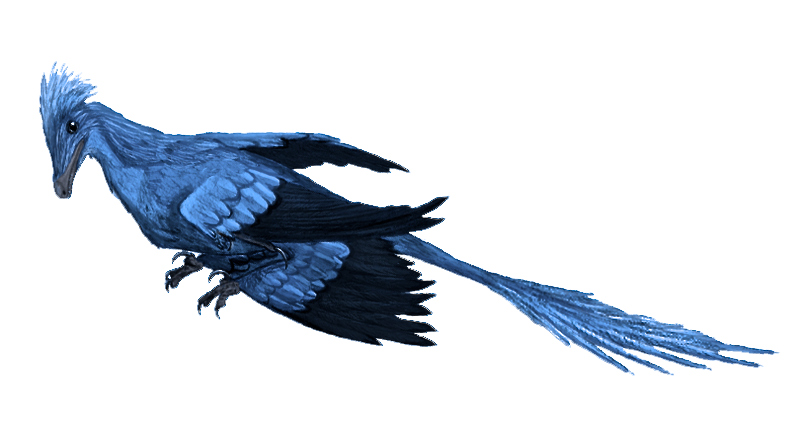
Perhaps no small dinosaur has challenged conventional thinking more dramatically than Microraptor, first described in 2000 from the Early Cretaceous Jiufotang Formation in China. This crow-sized dromaeosaurid possessed long pennaceous feathers not just on its arms but also on its legs, creating what appeared to be four wings. The discovery sparked intense debate about the origins of flight, suggesting that gliding with four wings might have been an evolutionary stage before the development of powered, two-winged flight seen in modern birds. Microraptor’s feathers contained structures called melanosomes that indicated it had a glossy, iridescent black plumage similar to modern crows and ravens, offering rare insight into dinosaur coloration. Biomechanical studies have shown that Microraptor was likely an effective glider, capable of moving between trees in dense forests, possibly hunting small vertebrates and insects. The presence of wing feathers on its legs ultimately required paleontologists to reconsider the traditional model of flight evolution, which had assumed a ground-up development rather than tree-down gliding.
Yi Qi: The Strange Case of Membrane Wings
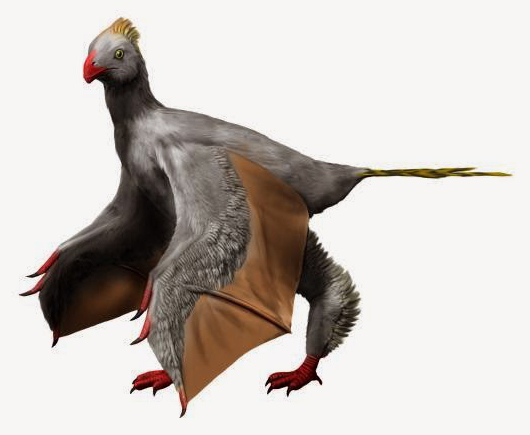
The 2015 description of Yi qi (pronounced “ee chee”) from the Middle-Late Jurassic of China introduced a truly bizarre small dinosaur to the fossil record. This pigeon-sized creature belonged to the scansoriopterygid family of small, presumably tree-dwelling dinosaurs, but possessed a suite of adaptations unlike any other known dinosaur. Most remarkably, Yi qi had an elongated wrist bone called a styliform element that appeared to support a membrane wing structure similar to those seen in bats and flying squirrels, alongside feathers. This unexpected combination of features suggested that different lineages of dinosaurs were experimenting with various forms of aerial locomotion, with Yi qi representing an evolutionary path that ultimately proved unsuccessful. The discovery highlighted the diversity of small dinosaur adaptations and reinforced the idea that the evolution of flight wasn’t a simple, linear progression. Yi qi’s unusual anatomy suggests that the transition from ground-dwelling dinosaurs to fully flight-capable birds involved numerous evolutionary experiments and “dead ends” that weren’t preserved in modern bird anatomy.
Mei Long: The Sleeping Dragon

One of the most touching and informative small dinosaur fossils ever discovered belongs to Mei long, a cat-sized troodontid whose name appropriately means “sleeping dragon” in Chinese. The specimen, dating to about 130 million years ago, was preserved in a sleeping posture remarkably similar to that of modern birds—with its head tucked under its arm and legs folded beneath its body. This preservation provided dramatic evidence that small dinosaurs shared behavioral traits with their avian descendants, further strengthening the dinosaur-bird evolutionary connection. The sleeping posture also suggests that Mei long was warm-blooded, as this position helps conserve body heat in modern birds. Additionally, the specimen’s preservation in such a life-like posture indicates it was likely killed suddenly, perhaps by volcanic gases or ash, and buried rapidly enough to maintain its natural sleeping position. Mei long has become an iconic example of how the smallest dinosaurs can provide some of the most meaningful insights into dinosaur behavior and physiology.
The Evolutionary Impact of Size Reduction

The trend toward miniaturization in the theropod lineage that led to birds represents one of the most significant patterns in dinosaur evolution. This reduction in body size facilitated numerous adaptations that eventually enabled powered flight. Smaller bodies required less energy to maintain elevated metabolic rates, allowing for the development of endothermy (warm-bloodedness) without excessive caloric demands. Reduced size also permitted greater agility and the occupation of arboreal (tree-dwelling) habitats inaccessible to larger dinosaurs. Neurologically, miniaturization led to increased encephalization—the brain grew proportionally larger relative to body size, enhancing cognitive abilities. The lightweight frames of small theropods featured hollow bones, reduced tails, and other skeletal modifications that would later prove crucial for flight capabilities. This evolutionary trajectory demonstrates that being small wasn’t a disadvantage but rather a significant adaptation that opened new ecological niches and ultimately led to one of evolution’s most successful radiations—modern birds, which comprise over 10,000 living species.
Anchiornis: Bridging the Gap Between Dinosaurs and Birds

Discovered in the Late Jurassic deposits of China’s Tiaojishan Formation, Anchiornis huxleyi represents one of the most important small dinosaurs for understanding the dinosaur-bird transition. Dating to approximately 160 million years ago, this crow-sized creature existed before Archaeopteryx, long considered the earliest bird. Anchiornis possessed features of both dinosaurs and birds, including a body covered in pennaceous feathers on its arms, legs, and tail that formed aerodynamic surfaces resembling wings. Remarkably well-preserved specimens have allowed scientists to reconstruct its plumage colors, revealing a mainly black body with white feather margins on its wings and a reddish crown of feathers on its head. Despite its bird-like appearance, Anchiornis retained numerous dinosaurian features, including teeth, a long bony tail, and unfused fingers. The mosaic of dinosaurian and avian characteristics in Anchiornis challenges the traditional boundary between “dinosaur” and “bird,” suggesting a more gradual evolutionary transition than previously recognized and emphasizing that birds are, in fact, highly specialized dinosaurs that survived the end-Cretaceous extinction.
Scipionyx: The “Dinosaur Mummy” That Revealed Internal Anatomy
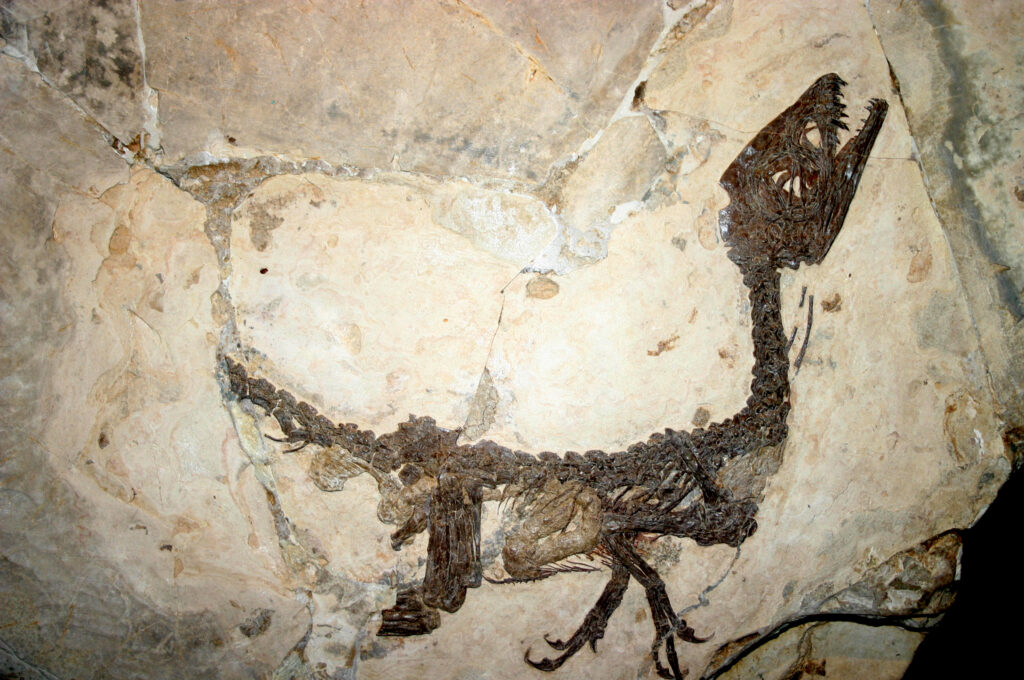
The discovery of a baby Scipionyx in the Pietraroja fossil beds of Italy in 1981 provided unprecedented insights into dinosaur soft tissue anatomy. This remarkably preserved specimen, nicknamed “Scipio,” contained fossilized impressions of internal organs including the liver, intestines, and muscles—features rarely preserved in the fossil record. Despite measuring only about 10 inches (25 cm) long, this juvenile coelurosaurian theropod has provided some of our most detailed information about dinosaur internal anatomy and digestive systems. Analysis of its abdominal contents revealed that it had recently consumed fish and possibly lizards, providing direct evidence of its diet. The preservation of tracheal rings indicated a respiratory system more similar to birds than to typical reptiles, supporting theories about the close relationship between small theropods and modern birds. Microanalysis of its tissues has even revealed the presence of original organic compounds, challenging conventional understanding of fossilization processes and the potential survival of original biomolecules over millions of years.
Small Dinosaurs and the Modern Understanding of Metabolism

The discovery of numerous small, feathered dinosaurs has transformed our understanding of dinosaur metabolism and physiology. These diminutive creatures exhibited features inconsistent with traditional cold-blooded reptilian metabolism, including insulating feathers, high growth rates, and adaptations for active lifestyles. Evidence from bone histology in small theropods reveals dense vascularization and growth rings indicating rapid, sustained growth more typical of warm-blooded animals than ectothermic reptiles. Their relatively large brains and eyes suggest high metabolic requirements to support these energy-intensive organs. Additionally, the presence of air sacs connected to the respiratory system in many small theropods indicates a highly efficient, bird-like breathing apparatus capable of supporting elevated metabolic demands. These adaptations collectively suggest that small dinosaurs were functioning with metabolic rates intermediate between modern reptiles and birds, with the most bird-like forms potentially achieving full endothermy. This metabolic evolution likely facilitated active hunting strategies, complex behaviors, and ultimately the high-energy lifestyle required for powered flight.
Epidexipteryx: Fashion Before Function in Feather Evolution
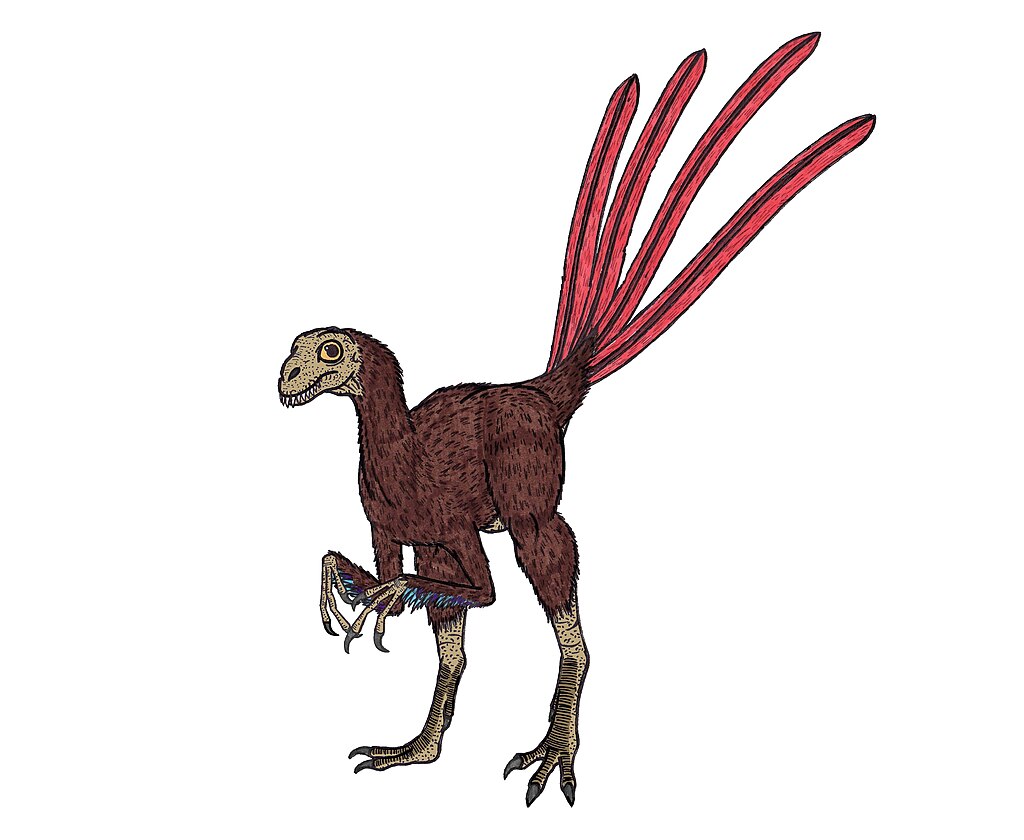
The discovery of Epidexipteryx hui in the Middle to Late Jurassic deposits of Inner Mongolia provided a fascinating glimpse into the early evolution of feathers. This pigeon-sized scansoriopterygid dinosaur possessed elongated tail feathers that appear to have been purely ornamental rather than aerodynamic in function. Unlike the flight feathers of birds or gliding dinosaurs like Microraptor, Epidexipteryx had ribbon-like tail feathers that would have been useless for generating lift but may have played important roles in display and species recognition. The presence of these elaborate decorative structures suggests that feathers initially evolved for purposes other than flight, potentially for insulation, display, or both. This evidence supports the theory that feathers underwent significant evolution for non-flight functions before being co-opted for aerial locomotion. Epidexipteryx also possessed a bizarre body plan with unusually elongated fingers, possibly used for probing for insects in bark or soil, indicating a specialized ecological niche unlike modern birds. The combination of primitive and derived features makes Epidexipteryx a critical specimen for understanding the complex evolutionary pathways that eventually led to modern birds.
The Ecological Role of Small Predators in Mesozoic Ecosystems
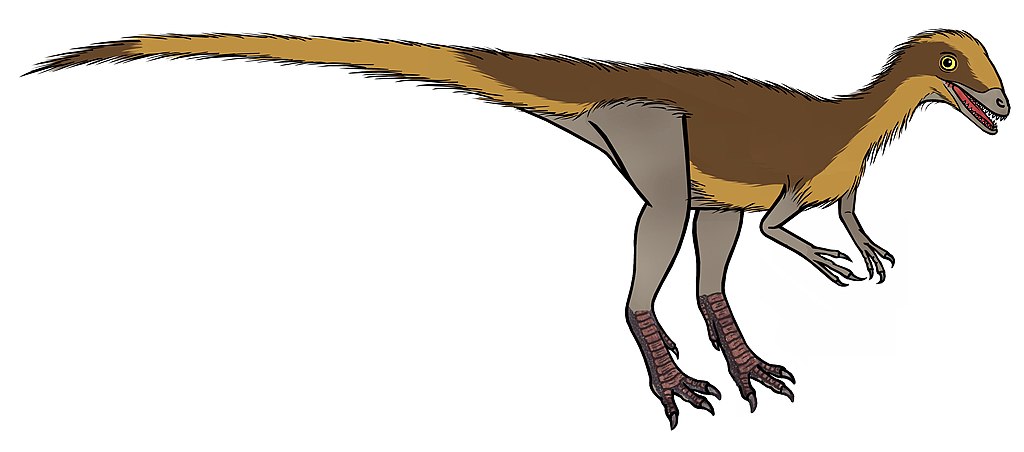
Small theropod dinosaurs occupied crucial ecological niches in Mesozoic ecosystems as mid-level predators and insectivores. Unlike their larger relatives that targeted substantial prey, these diminutive hunters specialized in capturing small vertebrates, insects, and other invertebrates that were inaccessible to larger theropods. Their presence helped control populations of small animals that might otherwise have reached pest proportions, similar to the ecological role played by small carnivorous mammals and birds in modern ecosystems. Evidence from stomach contents and coprolites (fossilized feces) indicates that small dinosaurs like Compsognathus and Sinosauropteryx were opportunistic feeders, consuming lizards, small mammals, and insects. The hollow bones and lightweight build of these predators allowed them to move quickly through dense vegetation and potentially climb trees, accessing food resources unavailable to larger dinosaurs. This ecological stratification, with different-sized predators targeting different prey, promoted biodiversity by preventing any single species from dominating the ecosystem. The sheer abundance of small theropod fossils from certain formations suggests they were among the most numerous dinosaurs in many Mesozoic habitats, forming a critical link in prehistoric food webs.
From Small Dinosaurs to Modern Birds: The Survivors

The evolutionary line from small theropod dinosaurs to modern birds represents one of the most successful adaptive radiations in vertebrate history. When the Chicxulub asteroid impact triggered the mass extinction event at the end of the Cretaceous period 66 million years ago, all non-avian dinosaurs perished. However, the small, bird-like dinosaurs that had evolved features like feathers, hollow bones, efficient lungs, and high metabolic rates managed to survive. Their small size may have been crucial to their survival, requiring less food during the post-impact period when ecosystems collapsed. The ability to fly, evolved initially in small dinosaurs, allowed early birds to disperse widely and exploit new ecological niches as the world recovered. Small size also permitted rapid reproduction and shorter generation times, enabling faster adaptation to changing conditions. The avian respiratory system, inherited from their dinosaur ancestors, provided efficient oxygen uptake that may have helped them survive in an atmosphere filled with impact debris. Today, with over 10,000 species worldwide, birds represent the last living dinosaurs—a testament to how the adaptations that evolved in their small dinosaurian ancestors proved remarkably successful in the long term.
The study of small dinosaurs has fundamentally transformed our understanding of dinosaur evolution, physiology, and behavior. From Compsognathus, which challenged early conceptions of dinosaurs as universally large creatures, to feathered specimens like Sinosauropteryx and Microraptor that revealed the dinosaurian origins of birds, these diminutive creatures have repeatedly forced scientists to revise established theories. Their well-preserved fossils have provided unprecedented insights into dinosaur coloration, internal anatomy, behavior, and evolutionary pathways. Far from being insignificant members of the dinosaur family tree, these small theropods represent crucial transitional forms that help us understand how ground-dwelling reptiles eventually evolved into the diverse array of birds that surround us today. As new techniques continue to extract more information from existing specimens and new discoveries emerge from fossil beds worldwide, these little dinosaurs will undoubtedly continue to make big contributions to our understanding of prehistoric life.



